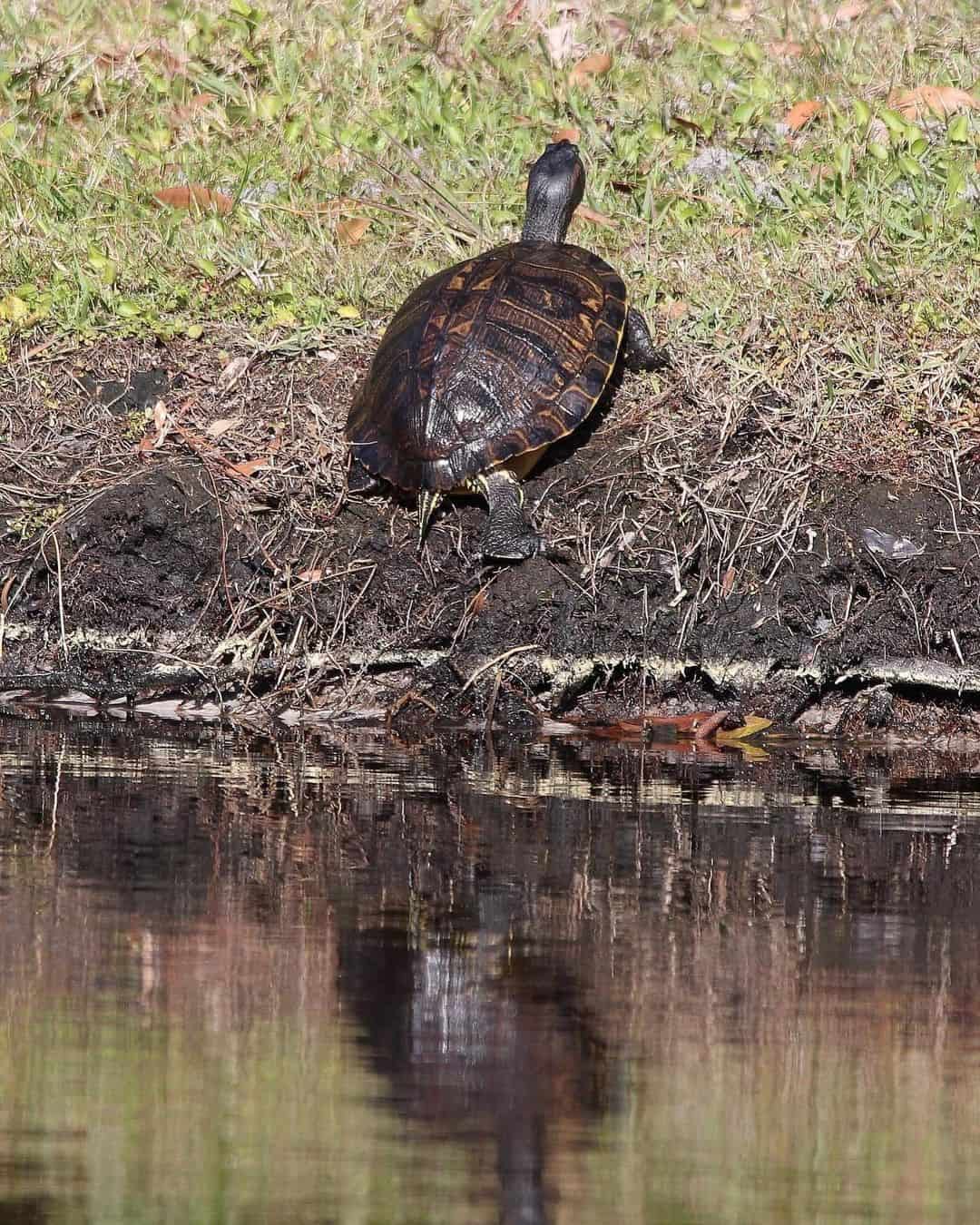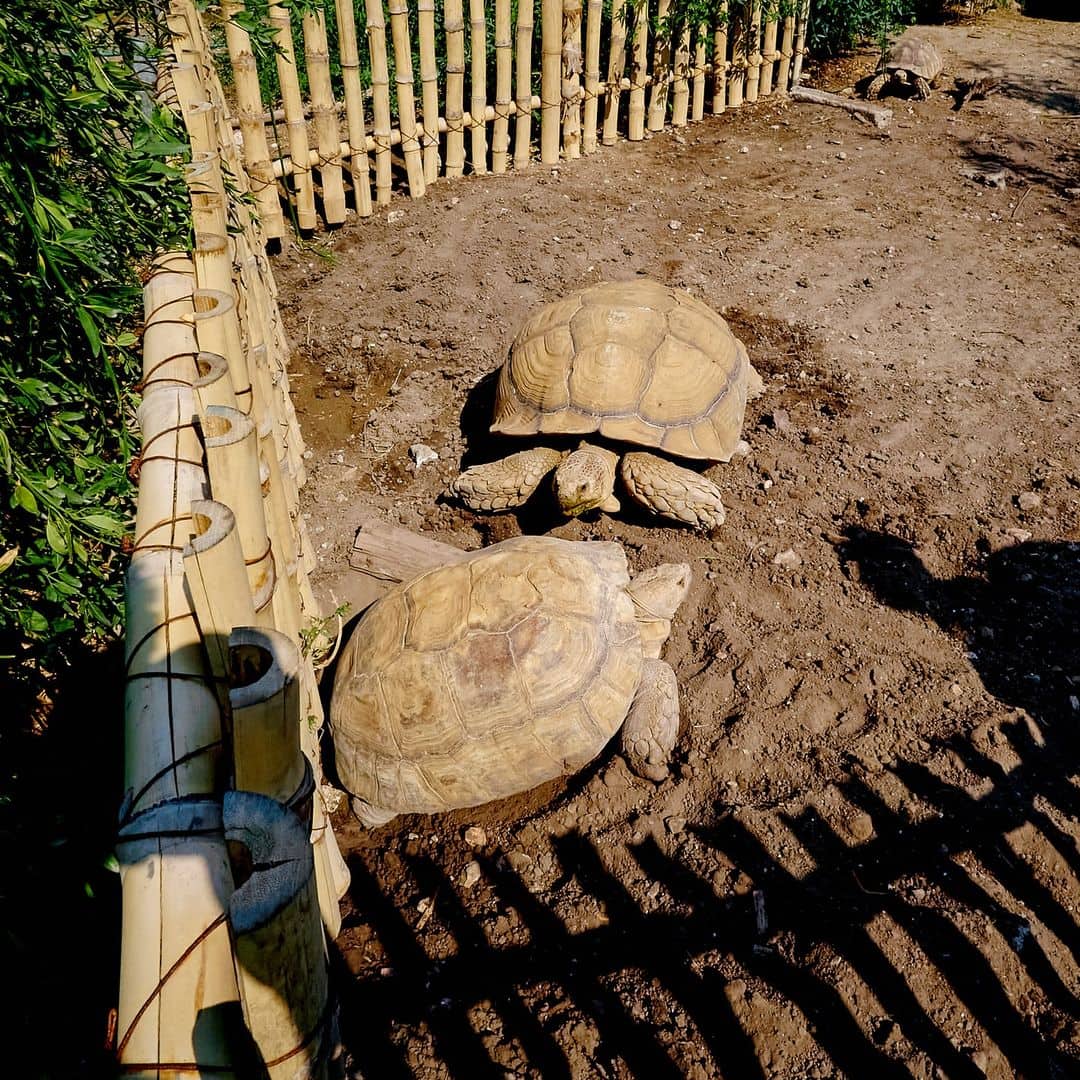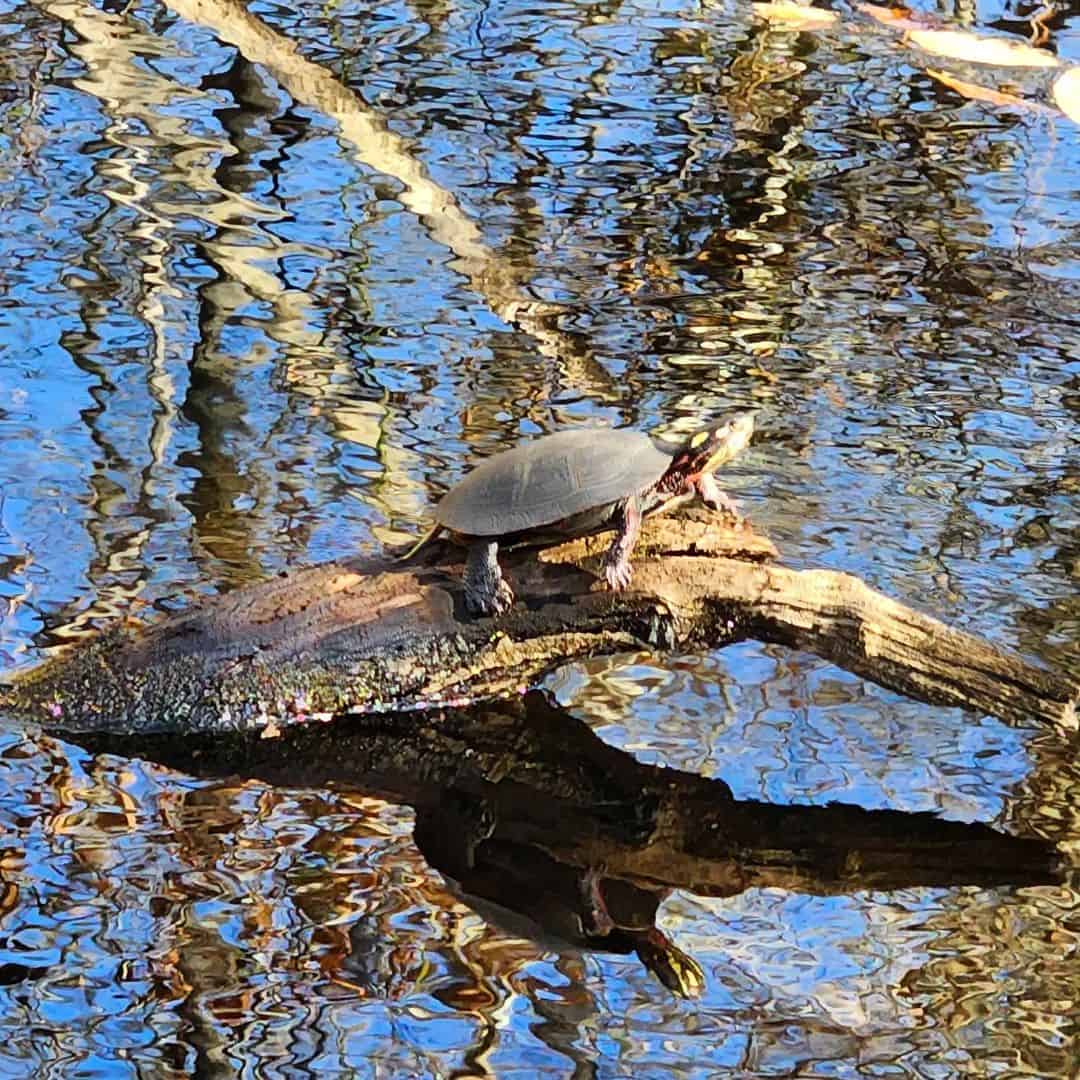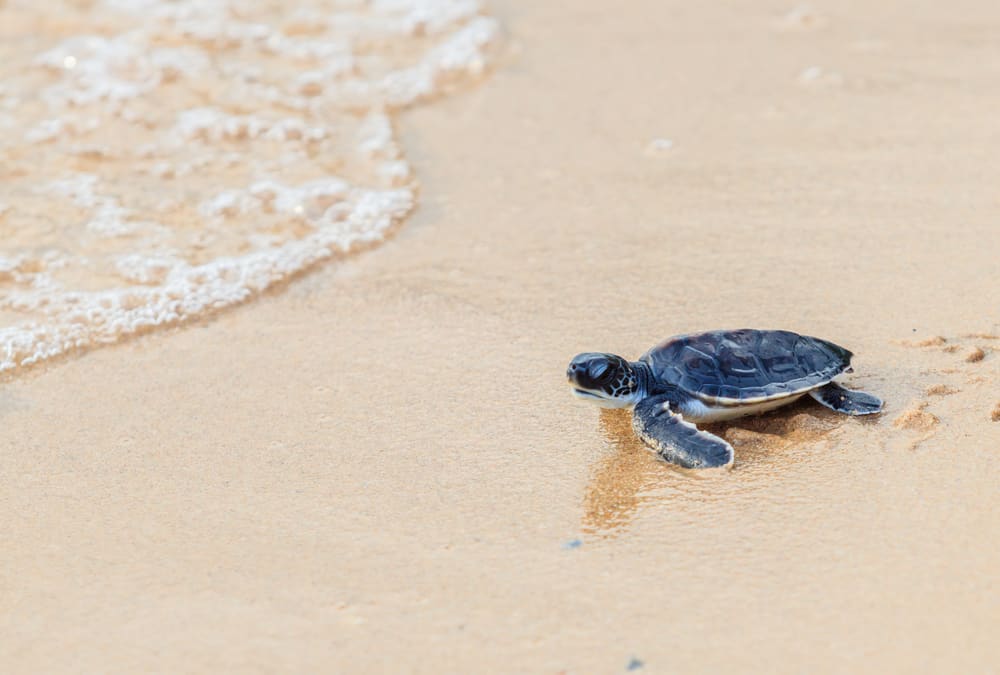Are you a person who is interested in cool facts about this fascinating reptile?
Or maybe someone who does not have a lot of free time but has heard that turtles are great as pets because they do not require much care and time? Or someone who just stumbled upon this article?
Regardless of which group you fall into, we have a super interesting article for all of you in which we will answer a question that interests many: how long can a turtle go without eating?
But that is not all. Expect to learn how turtles eat, what they like and need to eat if you keep them as pets, what their metabolism is like, and much more.
We hope that the answers to these questions will quench your curiosity and maybe help someone decide to buy this cute reptile.
What Is A Turtle?

Turtles represent an ancient and primitive group of reptiles; their oldest fossils date back to the Permian period, which began some 300 million years and lasted for about 50 million years.
These slow and sluggish animals were originally terrestrial organisms, but some of them later adapted to life in fresh water and the sea.
Like all reptiles, turtles are cold-blooded organisms (ectotherms), which means that they do not have constant body heat and can not maintain it independently of the temperature of the external environment.
Today, there are about 360 species of turtles in the world. They are most abundant in the tropics but are found on all continents except Antarctica.
What distinguishes them the most from other types of reptiles is the shell, which is made from bones and covered with scutes made of keratine in almost all turtle species. Only the leatherback sea turtle’s shell is covered with – you guessed it – leather.
How Long Can A Turtle Go Without Eating?
After this short lesson on Turtles 101, it is time to tackle the real question: how long can a turtle go without eating? There are many answers to this question because it depends on the turtle’s state and age.
1. Inactive Adult Turtles
Healthy adult turtles can survive up to 6 months without food. Yes, you heard right – 6 months.
But these turtles are in a state of rest or hibernation, which is called brumation. Brumation is technically not the same as hibernation or winter sleep since turtles do not sleep like warm-blooded hibernating animals – they are in a state of inactivity or very low activity.
Their already slow metabolism slows down even more during this state, and they live off stored fat.
Do not expect your pet turtles to go into brumation because they live in artificial conditions which rarely, if ever, require them to brumate.
2. Active Adult Turtles
Healthy adult turtles that are not in the brumation state, i.e., they are active, can usually go up to a week without eating.
This period can extend to a few weeks if they have a constant water supply for hydration and good living conditions (proper heating, UVB light). Anything more than that will lead to (severe) health problems and (substantial) loss of fat and muscles.
So, in case you own a pet turtle, such as a box turtle or red-eared slider turtle, we would not advise you to leave it unsupervised or without food for long periods of time. If you are, for example, going on a vacation, having a friend or an automatic feeder to feed your pet every 2 to 3 days will do the trick.
3. Juvenile Turtles
Juvenile or sub-adult turtles, as they are sometimes called, are turtles that are between 6 and 12 months old.
Since they are not yet fully developed at this stage of the life cycle, juvenile turtles can go “only” a couple of days without eating.
As is the case with adult turtles, clean water and proper living conditions will help them survive for up to a week or so without any food. But we do not recommend experimenting with this!
4. Baby Turtles
Baby turtles are those turtles who are up to six months old. As you might expect, they are the weakest and most vulnerable and can only last one day without food. Daily feeding daily is of the utmost importance – especially with food that is rich in protein.
How Are Turtles Able To Go Long Periods Without Eating?

Now that you know how long turtles can go without eating, it is time to learn how turtles can survive for a long time without food.
1. Metabolism
The body converts the food we put into it with the help of chemical reactions into energy, which it then uses to power itself.
But since turtles are very slow animals with very slow metabolism, they do not need much energy to keep them going, which means they do not need a lot of food either.
Interestingly, for a long time, their slow metabolism was described as the main culprit for why turtles live very long.
However, recent research has shown that their shell, which prevents predators from eating them, could be as equally important.
2. Regulation And Maintenance Of Internal Body Temperature
Turtles conserve (or do not require) energy on another front, which is the regulation and maintenance of internal body temperature.
Since their internal body temperature depends on their environment, they do not have to spend energy to keep their body warm, which is not the case with warm-blooded animals (endotherms). Miraculously enough, endotherm animals are not known for their ability to withstand a long time without food.
How Do Turtles Eat?
We do not know if you have ever taken a detailed look into a turtle’s mouth, but if you have not, here is an interesting fact about their mouth: turtles do not have teeth.
Only young turtles have something like a tooth, aptly called an egg-tooth or caruncle, since they use it to fracture the eggshell so that they can get out of it after hatching.
Over time, this quasi-tooth also disappears, after which turtles are left with “only” beak-like mouths. But their mouths feature sharp folds and ridges that help them bite off and shred food. After that, turtles usually swallow the food since they rarely chew it.
They also have flat jaws whose grip is extremely strong and can crush hard prey such as shells and crabs.
What Should Pet Turtles Eat?

Although turtles can be carnivores, herbivores, or omnivores, there is some stuff that most species will gladly munch on!
1. Commercial Food
People who have turtles most often decide to buy commercial food (turtle pellets) that contain nutrients, minerals, and vitamins that are good for their health.
However, you should know that this type of food should make up about a quarter of the turtle’s diet.
2. Protein
In order for your pet to be healthy and in top shape, you need to provide it with a good source of protein. It especially applies to juvenile and baby turtles that need to be given protein on a daily basis.
Adult specimens do not need it so often since their shell and body are already developed. Still, you should feed them protein every three days or so if you want them to achieve or stay in optimum health.
Some of the best sources of protein are snails, mealworms, earthworms, crickets, waxworms, boiled eggs, shrimps, insects, and feeder fish.
3. Vegetables
Vegetables are the following category of food you should provide your pet turtle with. And lots of it! Of course, you need to feed them fresh vegetables (fresh everything, for that matter!) that you will chop beforehand to make your pet’s job easier.
Vegetables are full of vitamins, minerals, and antioxidants that improve immunity and enable better and faster bone growth, among other things. Carrots, (romaine) lettuce, kale, collard greens, mustard greens, peas, and beans are just a few examples of what to feed them.
4. Fruit
Similarly to vegetables, fruit is rich in fiber, vitamins, minerals, and oxidants, so it should be part of your turtle’s diet.
However, do not overdo it with fruit, as it generally contains more sugar and calories than vegetables and should make up about 15 percent of the diet. Some beneficial fruits are figs, strawberries, grapes, cantaloupe, and raspberries.
5. Calcium
You should not forget to add calcium to your pet’s diet since it is necessary for the growth of a strong and healthy shell. Crushed eggshells, oyster shells, and cuttlefish bones are some of the best sources of calcium that you can use to enrich your turtle’s diet.
Conclusion
Turtles are definitely not hungry and greedy animals, for which they can thank their metabolism.
Adults and inactive (brumating) specimens can survive for up to 6 months without food, while active ones will go for several weeks without eating, provided they have enough water and good living conditions. Juvenile turtles can survive up to a week without food, while the smallest baby turtles need to eat every day.
If you would like to share some of your experiences with feeding turtles or want to ask about this topic, head to the comment section, we are waiting for you!
